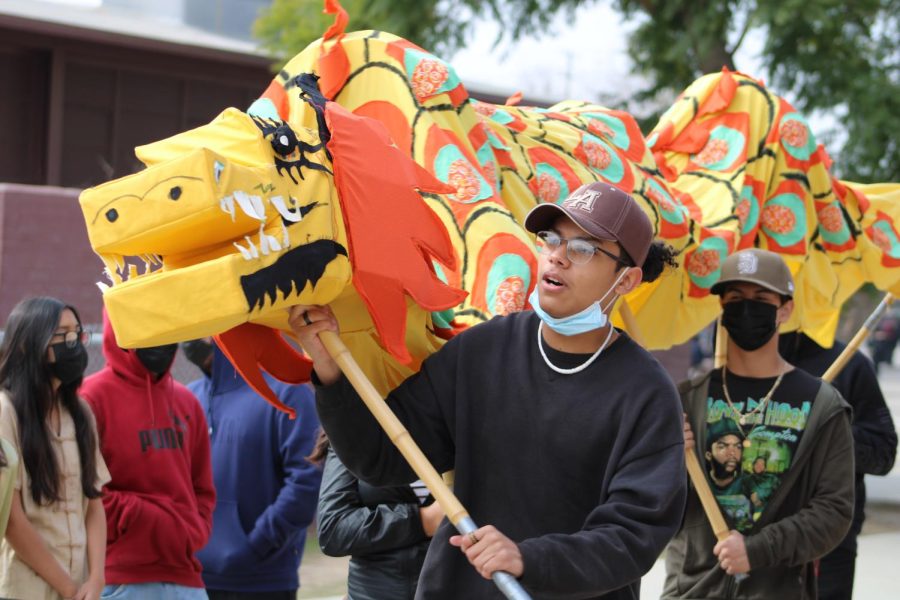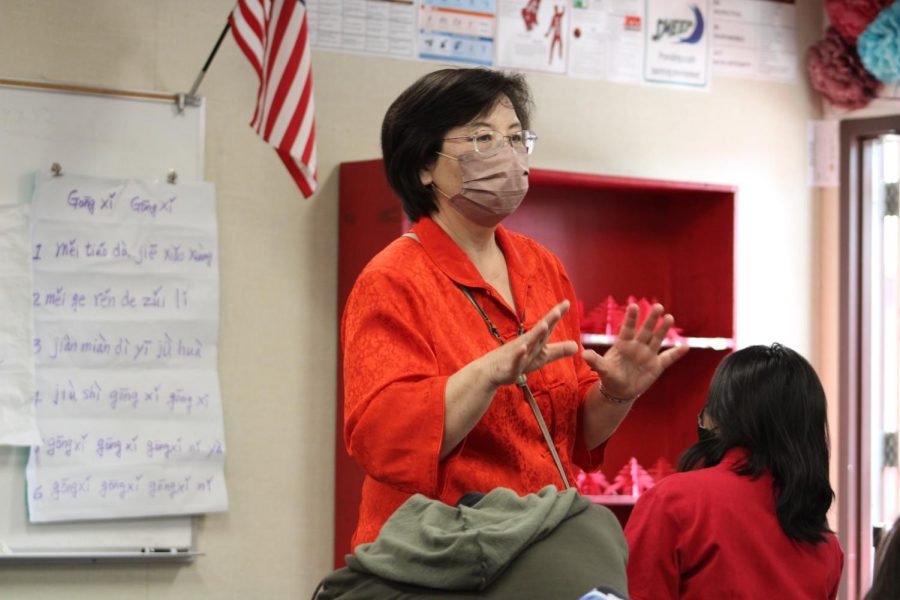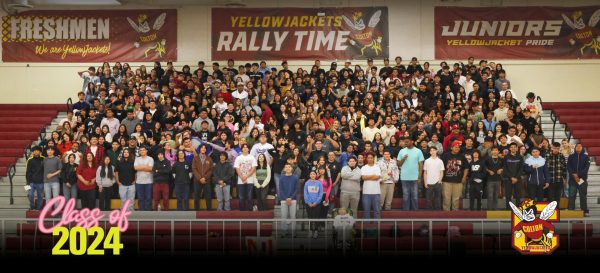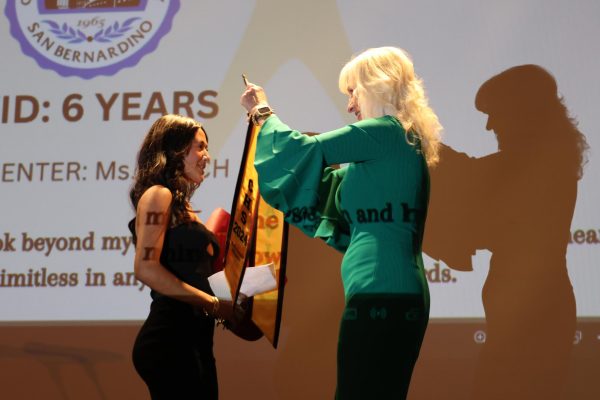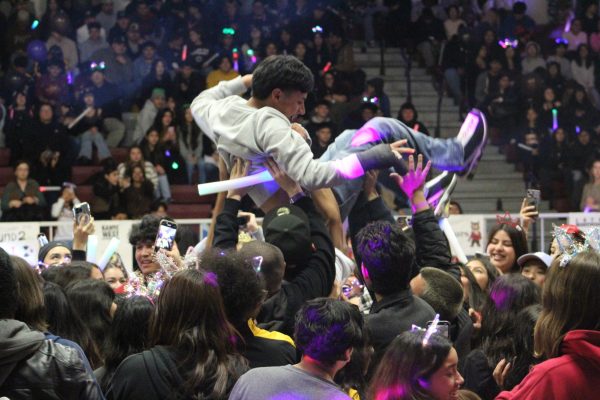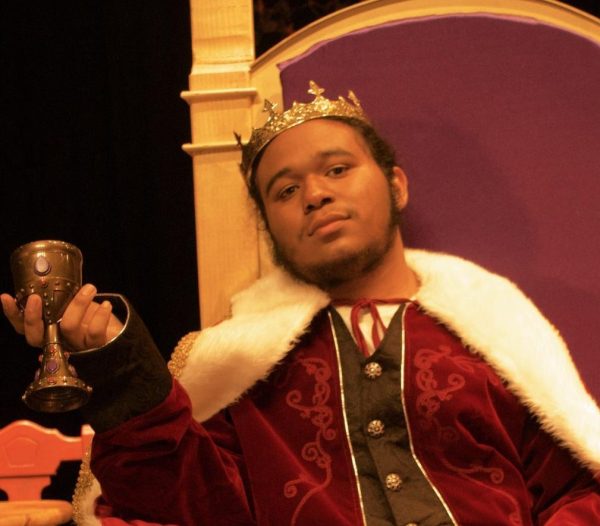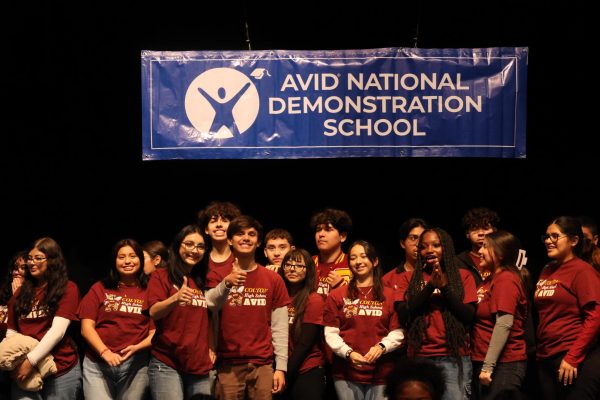Mandarin students celebrate Lunar New Year at Colton High
Ms. Yuh-Jin Lin, CHS’ Mandarin teacher, combines culture with performance to start a new Colton tradition
Students in Ms. Lin’s 4th period Mandarin class do the “Dragon Dance” is celebration of Chinese New Year.
Colton, CA—Tuesday, February 1st marks a holiday that many in Colton might not know about: the Lunar New Year.
Which is why Ms. Yuh-Jin Lin, Colton High’s Mandarin teacher, enlisted her students to share two songs and perform a small show for classes around campus.
During periods 1, 3, 4, and 6, Ms. Lin’s students visited several classrooms, including those taught by Ms. Roxanne Berch, Mr. Emmanuel Lopez, Mr. Terry Urban, Mr. Yogesh Sharma, Ms. Cinthia Rivera, and Ms. Julie Printz.
The idea originated through Ms. Lin’s experience as a Chinese woman. She herself celebrates Chinese New Year, so she wanted her students to experience Chinese culture and get a taste of the New Year festivities.
She decided the best way to do this was to learn and perform traditional Chinese songs. The songs students learned were “Gong Xi Gong Xi” (Congratulations) and “Xin Nian Hao” (Happy New Year). As students sang, they performed a dragon dance using a large dragon puppet that took four students to control.
Although a few students didn’t want to be a part of the presentation because they felt “uncomfortable” or “socially awkward,” most of Ms. Lin’s classes embraced the spirit of the holiday.
Overall they performed admirably, and enjoyed themselves.
Their audience enjoyed it, too. There were some laughs and smiles. Several students shared that it made an impact on them.
Mr. Lopez thought Ms. Lin’s idea was good because “it is a foreign language class using the visual arts to create a performance . . . It lets the students in Colton experience something that they wouldn’t otherwise, but they don’t just experience by reading it in a book—they are actually doing it.”
Chinese New Year is based on the Chinese lunar calendar, which begins with the first new moon between the end of January and when the first full moon rises. In China, the Lunar New Year is known as the Spring Festival, or Chūnjié in Mandarin.
Lunar New Year is celebrated across eastern Asia. In Korea, people celebrate the festival of Seollal, where respects are paid to ancestors and elders. The Vietnamese celebrate Tết, “The Festival of the First Morning of the Day,” which centers on new beginnings, good luck and tidings for family and strangers.
For each year in the lunar calendar there are 12 zodiac animal signs, and depending on the year you were born you get one of the 12 animals for that year. The animals are the rat, ox, tiger, rabbit, dragon, snake, horse, sheep, monkey, rooster, dog and pig.
The 2022 lunar year’s animal is a tiger, which can be found on decorations and red envelopes that are traditionally used for money gifts by adults for children. The tradition is described as a “Christmas gift.”
Another tradition the Chinese observe during New Year is a fish feast. Fish represent spare food, so that for the upcoming year there will be enough food. In addition to fish, sweet dumplings and regular dumplings are served, representing wealth and family reunion.
Ms.Lin enjoyed sharing these traditions with her classes while getting them prepared for their performance.
As this Chinese New Year celebration passes, many felt Ms.Lin should make this a new Colton High tradition.
Recently, the CHS Publications Department experienced a major theft as over $20,000 in photography equipment was stolen from our studio over Spring Break. This included all cameras. Any amount you donate will help rebuild our program. Thank you!

Melany is a sophomore in Colton High School. In her free time, when she's not writing for the Pepper Bough, she is spending time with her family or friends....

Alexander Sanchez is a sophomore. This is his 2nd year as a staff writer for the Pepper Bough. You can tell he's a hard worker because of the bags under...




